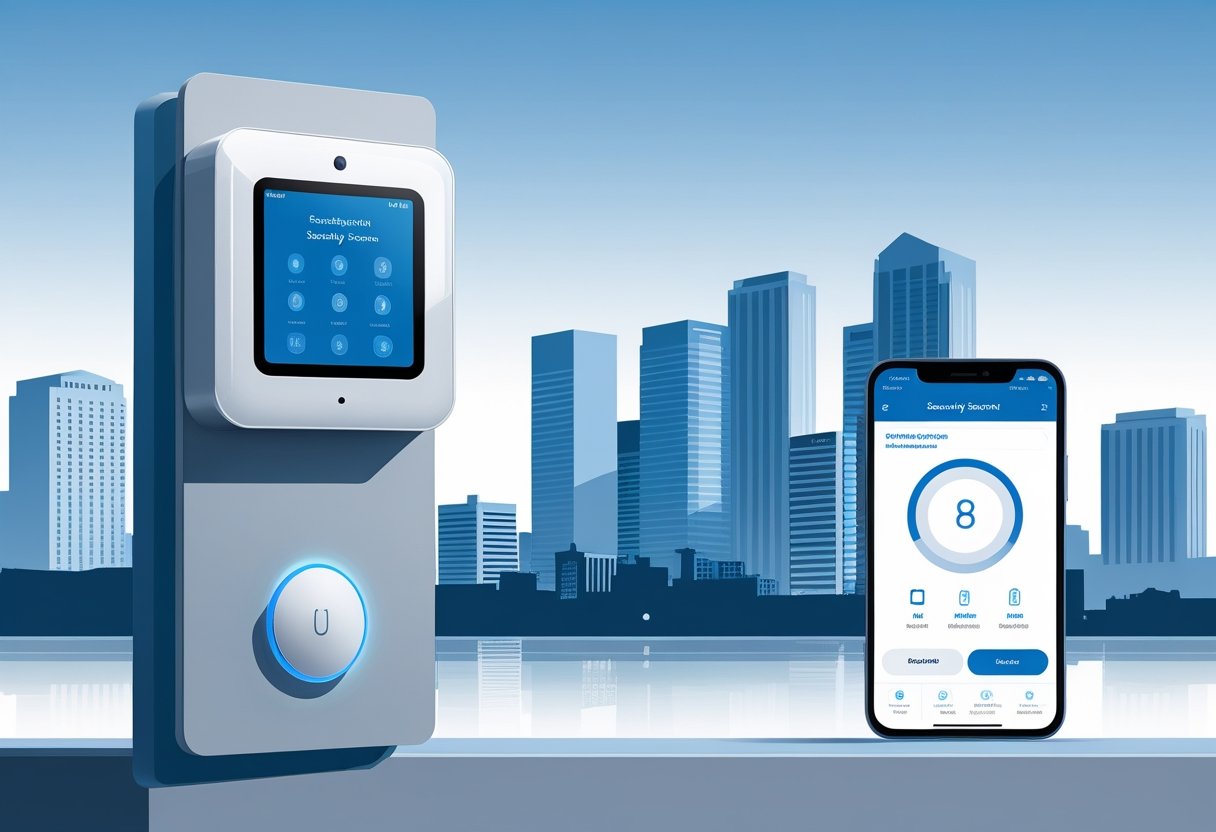When it comes to securing your home, understanding the differences between wired and wireless security systems is essential for making an informed decision. Wired systems offer reliable connections and robust security through physical cables, while wireless systems provide flexibility and ease of installation without the need for extensive wiring. Knowing the strengths and weaknesses of each can help you choose the best option for your specific needs.
You may find that wired security systems require professional installation, which may be a consideration if you are moving into a new home or want a permanent setup. In contrast, wireless systems allow for greater mobility and can often be set up quickly without the need for drilling or extensive modifications. The decision ultimately boils down to what features and convenience matter most to you.
In the greater Houston area, the choice between wired and wireless systems becomes relevant when exploring your home security options. With various factors at play, including cost, installation requirements, and integration capabilities, understanding these key differences can help you select the ideal alarm system to keep your home and loved ones safe.
Understanding Wired and Wireless Home Security Systems
When considering a home security system, understanding the differences between wired and wireless setups is essential. Each system has unique features, advantages, and applications that cater to different needs. You can select the best option based on your property and security requirements.
Defining Wired Home Security
A wired home security system relies on physical cables to connect all components, including sensors, cameras, and alarms. These systems typically use low-voltage cabling for reliable communication.
Installation often requires professional assistance to route cables through walls or ceilings, ensuring a tidy look. While installation can be complex, wired systems are known for their robustness and minimal signal disruption, making them a popular choice for permanent setups.
Defining Wireless Home Security
Wireless home security systems utilize radio frequency (RF) signals to communicate between components like sensors, control panels, and sirens. This technology allows for quicker installation and flexibility in placement.
You can easily expand or adjust wireless systems, accommodating changes in layout or requirements. Although they offer great convenience, ensure that battery maintenance and signal strength remain a priority to avoid potential vulnerabilities.
Key Components of Each System
Wired Security System Components:
- Alarm Control Panel: Central unit connecting all devices.
- Sensors: Door/window sensors and motion detectors.
- Cabling: Low-voltage wires connecting components.
Wireless Security System Components:
- Alarm Control Panel: Communicates wirelessly with other devices.
- Sensors: Battery-operated motion detectors and window/door sensors.
- RF Signals: Relay information among devices without physical connections.
Both wired and wireless systems require careful consideration of your home layout, security needs, and long-term goals. Your choice can significantly impact the effectiveness of your overall security strategy.
How Wired and Wireless Alarm Systems Operate
Wired and wireless alarm systems function through distinct mechanisms that influence their reliability and performance. Understanding how each system operates helps you choose the best option for your security needs.
Wiring Infrastructure and Connectivity
Wired alarm systems rely on a network of physical cables to connect sensors, keypads, and control panels. These connections typically use low-voltage wiring, ensuring stable communication between components. Installation often requires running cables through walls, ceilings, or floors, which can increase setup time and cost.
Conversely, wireless alarm systems utilize RF (radio frequency) signals for communication. Sensors and devices communicate with the control panel via encrypted signals, reducing vulnerability to interference. This setup leads to easier installation, as no extensive wiring is necessary. However, reliable battery management is crucial, as devices depend on batteries for power.
RF Signals and Communications
In wireless systems, RF signals play a pivotal role in connecting various components. When a sensor detects an intrusion, it sends an RF signal to the control panel. This signal is received by the RF receiver, which triggers the alarm response.
Different frequencies and protocols can enhance communication reliability. For example, some systems use 868 MHz or 915 MHz frequencies that are less prone to interference. While wireless systems provide flexibility and rapid deployment, they may face challenges such as range issues and signal blockage from walls or large objects.
Cellular Backup and Remote Monitoring
Modern wireless alarm systems often feature cellular backup, which provides an additional layer of security. In the event of a power outage or internet disruption, these systems can still send alerts through cellular networks. This ensures that you remain informed about any security events, even when primary connections fail.
Remote monitoring capabilities also enhance system functionality. You can access your alarm system from anywhere via a smartphone app. This feature allows you to monitor activity, receive alerts, and control security settings in real time, providing peace of mind, whether at home or away.
Comparison of Key Features: Wired vs Wireless
When evaluating wired and wireless home security systems, it's essential to understand the distinct features, especially in terms of installation, signal reliability, and maintenance. Each system has unique advantages and limitations that can significantly impact your decision.
Installation Requirements
Wired systems often require professional installation due to the complexity of running physical cables throughout your home. You’ll need to strategize the placement of each device, considering existing architecture and access points. This can result in a labor-intensive process, especially in larger spaces.
In contrast, a wireless home security system offers flexibility with simpler installation. You can often set up the devices yourself, making it easier to customize your layout. Although some components may still benefit from professional guidance, the overall time and effort required are generally less.
Signal Reliability and Interference
Wired systems provide robust signal reliability. Since they rely on physical connections, the risk of signal interference from external sources is minimal. This is particularly important for critical security alerts, ensuring your system operates consistently.
Wireless systems, while convenient, can be susceptible to signal interference. Common household electronics, like microwaves and baby monitors, may disrupt the wireless signals. It's crucial to consider the layout of your home and the potential for interference when choosing your system, especially in urban areas where competing signals are abundant.
Power Supply and Maintenance
Wired systems are powered by your home’s electrical system. This means consistent power as long as your electricity is functioning. The maintenance mostly involves checking the physical components and ensuring they’re operational.
Wireless home security systems, however, depend on batteries for each device. You'll need to regularly monitor battery levels and replace them to ensure functionality. Additionally, these systems may require periodic software updates. Being proactive about these aspects can prevent system failures and maintain security integrity.
Devices and Sensors in Wired and Wireless Systems
When choosing a home security system, understanding the various devices and sensors is crucial. The components can significantly vary between wired and wireless systems, impacting installation, performance, and integration.
Security Cameras and Surveillance
Security cameras are essential for monitoring your property. In a wired system, these cameras connect directly to a central control panel via physical cables. This setup often provides a more stable video feed and reliable performance over long distances.
In contrast, wireless security cameras transmit data using encrypted radio signals. This allows for greater flexibility in camera placement, as you can install them without worrying about cable runs. Wireless cameras also typically feature remote viewing capabilities, enabling you to monitor your home from your smartphone or tablet. Many models now include advanced features like motion detection, night vision, and two-way audio, enhancing their effectiveness in securing your property.
Motion Sensors and Door Sensors
Motion sensors are designed to detect movement within a specific area. In wired systems, these sensors are connected through low-voltage cabling, which can minimize interference and provide a consistent detection area. They are generally considered more reliable for large properties and can seamlessly integrate with other wired components.
Wireless motion sensors, on the other hand, offer convenience and ease of installation. You can place them in various locations without needing to run wires through walls. These sensors often come with batteries, reducing installation time. Door sensors are also crucial; they alert you when doors are opened. Both wired and wireless options can be placed on all entry points, enhancing your security network and allowing you to monitor access more effectively.
Wireless Sensors and Integration
Wireless sensors provide flexibility in how you secure your home. They are typically easy to install and can be moved around as your security needs change. These sensors use radio frequencies for communication, which can simplify the process of adding additional devices to your system later.
Integrating wireless sensors into your alarm system can also enhance overall functionality. Many systems allow for smart home integration, enabling you to control sensors, cameras, and alarms through a single platform. You can set up notifications or automation rules, making your home security more responsive to your lifestyle. This adaptability is particularly beneficial for homeowners in the greater Houston area, where local conditions may necessitate adjustments to security measures.
Advanced Features and Integration
When it comes to security systems, advanced features and seamless integration are crucial for enhancing functionality and convenience. Understanding how these systems interact with home automation can significantly impact your overall security experience.
Home Automation Compatibility
Many modern security systems prioritize compatibility with home automation devices. This feature allows you to manage security elements alongside other smart home components, such as lights, thermostats, and locks. For instance, your security system can automatically turn on outdoor lights when it detects movement.
By integrating with platforms like Google Home or Amazon Alexa, you can control your security system using voice commands. This compatibility means enhanced convenience, enabling you to manage all aspects of your home with a single interface, thus streamlining daily routines.
Z-Wave and Smart Device Support
Z-Wave technology is central to many wireless security systems. It facilitates communication between devices without relying on Wi-Fi, reducing network congestion. Using Z-Wave, your security system can seamlessly connect with other smart devices—like door sensors, cameras, and smart plugs—creating a unified security ecosystem.
By integrating Z-Wave devices, your system can enhance protection with automated responses. For example, when a door sensor is triggered, your security cameras can instantly activate to monitor the area. This interconnectedness not only improves security but also delivers a smoother user experience in managing your home.
Choosing the Best System for Your Home
Selecting the right home security system depends heavily on your individual needs and circumstances. A thorough evaluation of the factors influencing your decision will help ensure that you choose a system that effectively protects your home.
Factors Influencing Your Decision
When choosing between wired and wireless home security systems, consider these key factors:
- Installation: Wired systems typically require professional installation, making them less flexible and more time-consuming. Wireless options offer easier and quicker setup, ideal for those who prefer a DIY approach.
- Reliability: Wired systems tend to be more reliable, as they are less susceptible to interference. If you live in an area with fluctuating Wi-Fi signals, a wired system might be your best choice.
- Scalability: Wireless systems excel in scalability, allowing you to easily add more components as your needs grow. If you anticipate expanding your security setup, a wireless system could be beneficial.
Property Types and User Needs
Your property type can significantly influence the choice between wired and wireless systems.
- Single-Family Homes: For permanent residences, wired systems may provide greater security and peace of mind. These setups could also enhance property value.
- Rentals or Temporary Housing: For renters or those in temporary accommodations, wireless systems offer flexibility and portability without damaging walls.
- Smart Home Integration: If you plan to integrate smart home technology, consider wireless options, which typically offer compatibility with various smart devices.
Assessing these factors in relation to your specific property and security needs will guide you toward the most suitable system for your environment.
Frequently Asked Questions
When considering wired versus wireless home security systems, several specific factors come into play. Understanding their advantages and disadvantages, installation processes, maintenance, reliability, cost, and DIY options will help you make an informed decision tailored to your needs.
What are the advantages and disadvantages of wired alarm systems compared to wireless?
Wired alarm systems offer reliability and stability, as they are less susceptible to signal interference. They often come with lower long-term maintenance costs since they do not rely on batteries.
On the downside, installation can be more complex, often requiring professional help. Additionally, wired systems can be less flexible in terms of moving or expanding your security network.
Wireless systems, conversely, are easier to install and more flexible. They can be expanded easily and do not require extensive wiring. However, they may experience interference and typically require battery replacements, increasing long-term costs.
How do the installation processes for wired and wireless home security systems differ?
Wired systems necessitate professional installation because of the extensive wiring involved. Technicians will typically route cables through walls, ceilings, and floors, which can be time-consuming.
In contrast, wireless systems allow for DIY installation, as they typically use adhesive or simple mounting options. This makes them more convenient for renters or those looking to set up a system quickly.
What are the maintenance considerations for wired versus wireless security systems?
Wired systems require minimal maintenance once installed. Since they are hardwired, issues are rare but can involve checking connections and ensuring that any sensors are functioning.
Wireless systems, while easier to install, require more frequent checks. You must monitor battery levels and replace batteries as necessary, which adds a layer of ongoing maintenance.
How do wired and wireless security systems perform in terms of reliability and interference?
Wired systems are generally more reliable because they use direct connections. This reduces the risk of interference from electronic devices or physical obstacles, ensuring consistent communication with the control panel.
Wireless systems can face challenges with interference. Signal strength can be affected by walls, electronic devices, or other radio frequencies, which may lead to delays or disconnections.
What is the cost comparison between setting up a wired and a wireless home security system?
Initial setup costs for wired systems can be higher due to professional installation and materials needed for wiring. However, they often have lower long-term costs, as maintenance and upgrades are less frequent.
Wireless systems typically have a lower upfront cost and can be set up without professional help. However, ongoing expenses, such as battery replacements, can add up over time.
Are DIY installation options available for both wired and wireless home security systems?
Only wireless home security systems are generally suitable for DIY installation. They are designed with user-friendly features that allow you to set them up without specialized skills.
Wired systems typically require professional installation due to the complexity of wiring. If you're considering a wired system, hiring a trained technician is advisable to ensure optimal performance.
.svg)



.svg)


.svg)



